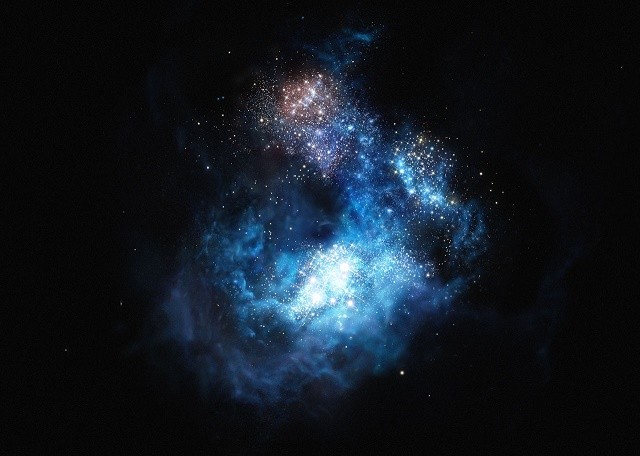Scientists believe that the brightest galaxy ever detected may contain remnants of the universe's first stars that were formed right after the Big Bang.
The brightest known galaxy called the CR7 apparently possesses star material that dates back to the universe's reionization period some 800 million years after the Big Bang where scientists believe that looking at these stars is similar to looking back into time.
The galaxy CR7 was detected by observatories in Hawaii and Chile which is the Very Large Telescope along with the Hubble Space Telescope where astronomers consider this as remarkable evidence for a certain class of extremely rare stars called Population III.
Population III stars are apparently the very first stars to form in the universe. Scientists have been searching for these stars where they only exist in theory until now where Population III stars are found to be rich in hydrogen, helium and lithium from the Big Bang event.
However, these stars are short lived where they explode as supernovae, releasing heavier elements from their core.
Researchers now know that these elements apparently form a much more common class of stars called Population I and Population II stars. Heavier elements that were later formed including those that are conducive for life like oxygen, carbon, nitrogen and iron originated from these subsequent stars.
According to lead author of the study David Sobral aof the Leiden Observatory in the Netherlands, the reason why Population III stars are so hard to detect is because of their relatively short lives. Upon observing CR7 and its original stars, it's considered so distant that its existence was less than a billion years right after the Big Bang.
Data from spectroscopic observations reveal that there are no indications of heavier elements located specifically in the bright pocket of the CR7 galaxy which can be considered as enough evidence for the existence of Population III stellar clusters.
The team admits that this discovery was unexpected as they were just examining the nature of the CR7 galaxy piece by piece and when they finally understood that it was the most luminous distant galaxy there is, it also possesses each characteristic of Population III stars.
According to co-author of the study Jorryt Matthee of Leiden University, this remarkable finding provides milestone insights about the earliest stars in existence that led to the basic elements that make up everything in the universe today. This study is published in the Astrophysical Journal.



























